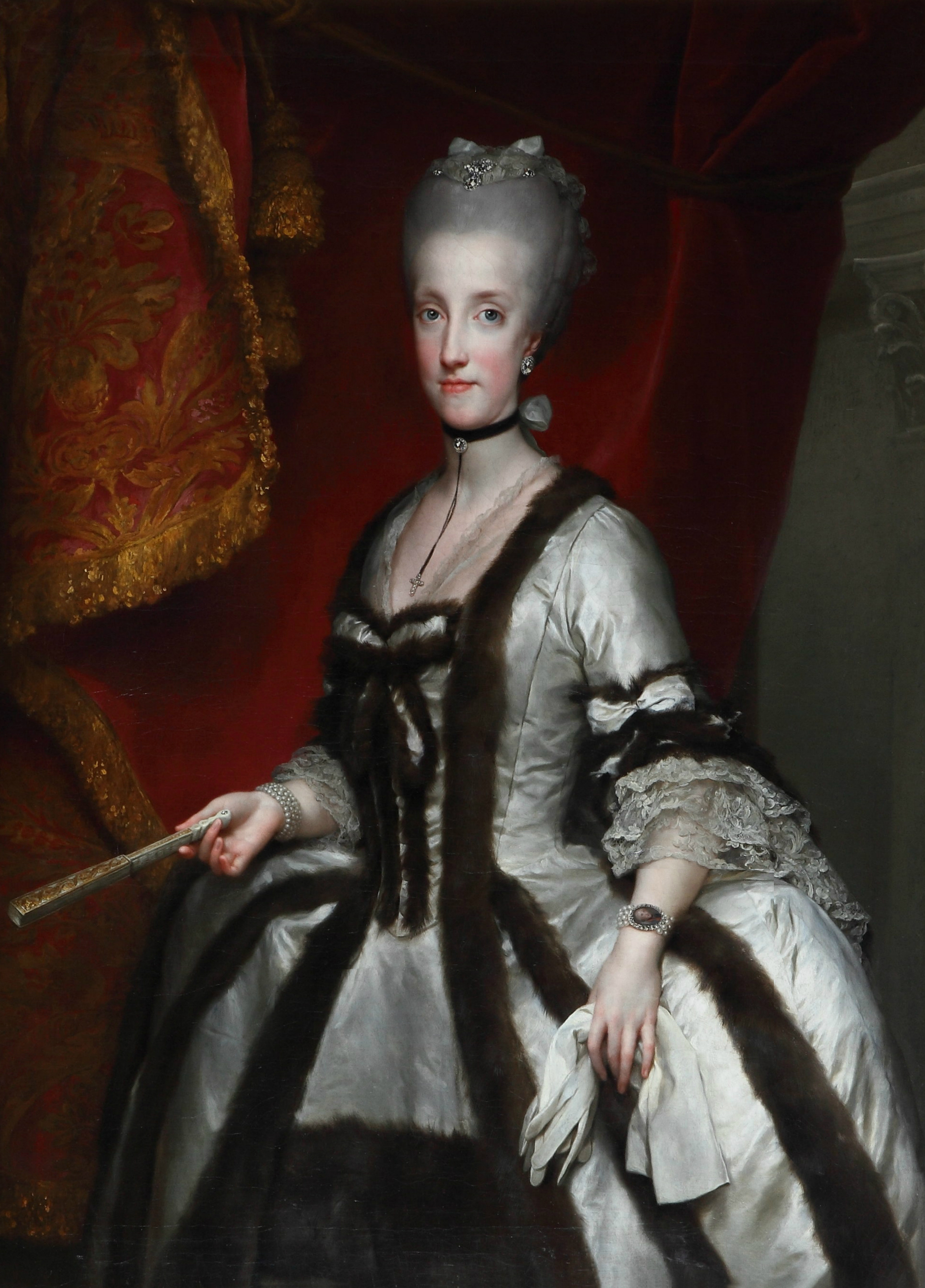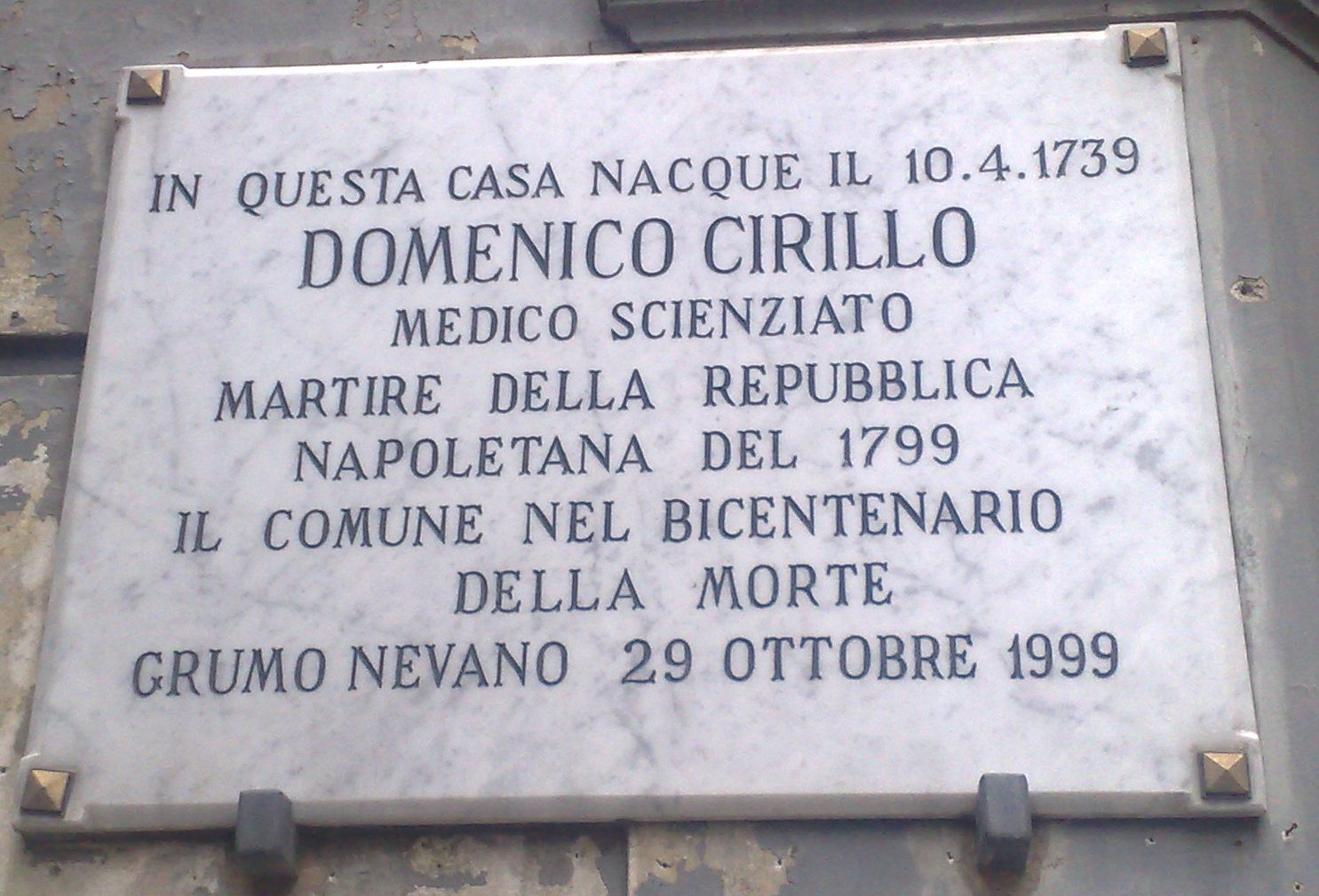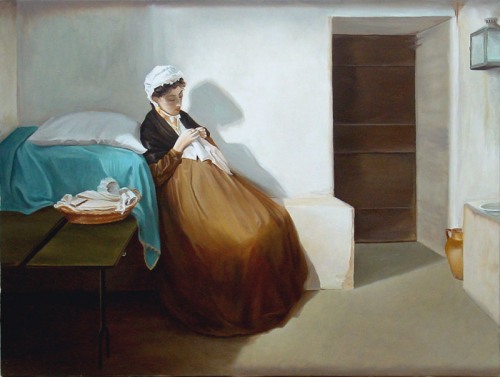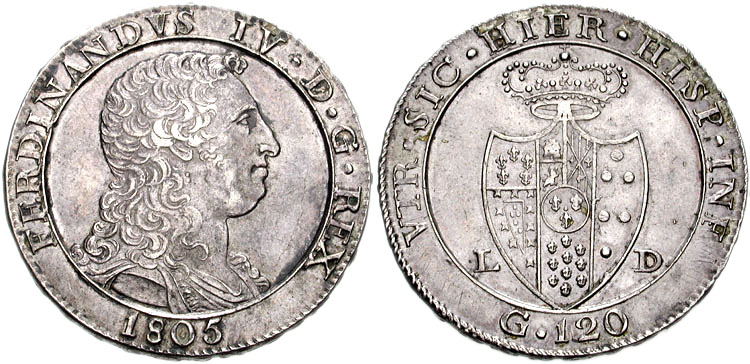|
The Remains Of Nothing
''The Remains of Nothing'' ( it, Il resto di niente) is a 2004 Italian historical drama film directed by Antonietta De Lillo. It was screened out of competition at the 61st Venice International Film Festival. It won the David di Donatello Award for Best Costume Design (to Daniela Ciancio). Cast *Maria de Medeiros as Eleonora * Imma Villa as Graziella * Rosario Sparno as Gennaro * Raffaele Di Florio as Vincenzo Sanges * Riccardo Zinna as Pasquale Tria * Maria Grazia Grassini as Donna Vovò Fonseca *Enzo Moscato as Gaetano Filangieri *Cesare Belsito as King Ferdinand * Giulia Weber as Maria Carolina * Nunzia Di Somma as Luisa Sanfelice * Ivan Polidoro as Vincenzo Cuoco * Raffaele Esposito as Domenico Cirillo * Emi Salvador as Ciro Pulcinella See also * List of Italian films of 2004 A list of films produced in Italy in 2004 (see 2004 in film): See also * 2004 in Italian television External linksItalian films of 2004at the Internet Movie Database {{DEFAUL ... [...More Info...] [...Related Items...] OR: [Wikipedia] [Google] [Baidu] |
Antonietta De Lillo
Antonietta may refer to: *Antonietta (given name), a female given name *Antonietta (gastropod), a genus belonging to the taxonomic family ''Glaucidae'' of colorful sea slugs *Antonietta (novel), a 1991 novel by John Hersey See also *''Antonieta'', a 1982 Spanish film *Antonia (other) Antonia may refer to: People * Antonia (name), including a list of people with the name * Antonia gens, a Roman family, any woman of the gens was named ''Antonia'' * Antônia (footballer) * Antônia Melo Entertainment * ''Antonia's Line'', ori ... * Antonina (other) {{disambiguation ... [...More Info...] [...Related Items...] OR: [Wikipedia] [Google] [Baidu] |
Maria Carolina Of Austria
Maria Carolina Louise Josepha Johanna Antonia (13 August 1752 – 8 September 1814) was List of consorts of Naples, Queen of Naples and List of Sicilian consorts, Sicily as the wife of King Ferdinand I of the Two Sicilies. As ''de facto'' ruler of her husband's kingdoms, Maria Carolina oversaw the promulgation of many reforms, including the revocation of the ban on Freemasonry, the enlargement of the navy under her favorite, Sir John Acton, 6th Baronet, Sir John Acton and the expulsion of Spanish influence. She was a proponent of enlightened absolutism until the advent of the French Revolution, when, in order to prevent its ideas gaining currency, she made Naples a police state. Born an archduchess of Austria, the thirteenth child of Empress Maria Theresa and Francis I, Holy Roman Emperor, Emperor Francis I, Maria Carolina married Ferdinand as part of an Austrian alliance with Spain, of which Charles III of Spain, Ferdinand's father was king. Following the birth of a male heir in ... [...More Info...] [...Related Items...] OR: [Wikipedia] [Google] [Baidu] |
2004 Films
2004 in film is an overview of events, including the highest-grossing films, award ceremonies, festivals, a list of country-specific lists of films released, notable deaths and film debuts. ''Shrek 2'' was the year's top-grossing film, and '' Million Dollar Baby'' won the Academy Award for Best Picture. Evaluation of the year Renowned American film critic and professor Emanuel Levy described 2004 as "a banner year for actors, particularly men." He went on to emphasize, "I can't think of another year in which there were so many good performances, in every genre. It was a year in which we saw the entire spectrum of demographics displayed on the big screen, from vet actors such as Clint Eastwood and Morgan Freeman, to seniors such as Pacino, De Niro, and Hoffman, to newcomers such as Topher Grace. As always, though, the center of the male acting pyramid is occupied by actors in their forties and fifties, such as Sean Penn, Johnny Depp, Liam Neeson, Kevin Kline, Don Cheadle, J ... [...More Info...] [...Related Items...] OR: [Wikipedia] [Google] [Baidu] |
2004 Drama Films
4 (four) is a number, numeral and digit. It is the natural number following 3 and preceding 5. It is the smallest semiprime and composite number, and is considered unlucky in many East Asian cultures. In mathematics Four is the smallest composite number, its proper divisors being and . Four is the sum and product of two with itself: 2 + 2 = 4 = 2 x 2, the only number b such that a + a = b = a x a, which also makes four the smallest squared prime number p^. In Knuth's up-arrow notation, , and so forth, for any number of up arrows. By consequence, four is the only square one more than a prime number, specifically three. The sum of the first four prime numbers two + three + five + seven is the only sum of four consecutive prime numbers that yields an odd prime number, seventeen, which is the fourth super-prime. Four lies between the first proper pair of twin primes, three and five, which are the first two Fermat primes, like seventeen, which is the third. On the other ... [...More Info...] [...Related Items...] OR: [Wikipedia] [Google] [Baidu] |
Italian Historical Drama Films
Italian(s) may refer to: * Anything of, from, or related to the people of Italy over the centuries ** Italians, an ethnic group or simply a citizen of the Italian Republic or Italian Kingdom ** Italian language, a Romance language *** Regional Italian, regional variants of the Italian language ** Languages of Italy, languages and dialects spoken in Italy ** Italian culture, cultural features of Italy ** Italian cuisine, traditional foods ** Folklore of Italy, the folklore and urban legends of Italy ** Mythology of Italy, traditional religion and beliefs Other uses * Italian dressing, a vinaigrette-type salad dressing or marinade * Italian or Italian-A, alternative names for the Ping-Pong virus, an extinct computer virus See also * * * Italia (other) * Italic (other) * Italo (other) * The Italian (other) * Italian people (other) Italian people may refer to: * in terms of ethnicity: all ethnic Italians, in and outside of Italy * in ... [...More Info...] [...Related Items...] OR: [Wikipedia] [Google] [Baidu] |
Films Set In The 18th Century
A film also called a movie, motion picture, moving picture, picture, photoplay or (slang) flick is a work of visual art that simulates experiences and otherwise communicates ideas, stories, perceptions, feelings, beauty, or atmosphere through the use of moving images. These images are generally accompanied by sound and, more rarely, other sensory stimulations. The word "cinema", short for cinematography, is often used to refer to filmmaking and the film industry, and to the art form that is the result of it. Recording and transmission of film The moving images of a film are created by photographing actual scenes with a motion-picture camera, by photographing drawings or miniature models using traditional animation techniques, by means of CGI and computer animation, or by a combination of some or all of these techniques, and other visual effects. Before the introduction of digital production, series of still images were recorded on a strip of chemically sensitized ... [...More Info...] [...Related Items...] OR: [Wikipedia] [Google] [Baidu] |
2000s Historical Drama Films
S, or s, is the nineteenth letter in the Latin alphabet, used in the modern English alphabet, the alphabets of other western European languages and others worldwide. Its name in English is ''ess'' (pronounced ), plural ''esses''. History Origin Northwest Semitic šîn represented a voiceless postalveolar fricative (as in 'ip'). It originated most likely as a pictogram of a tooth () and represented the phoneme via the acrophonic principle. Ancient Greek did not have a phoneme, so the derived Greek letter sigma () came to represent the voiceless alveolar sibilant . While the letter shape Σ continues Phoenician ''šîn'', its name ''sigma'' is taken from the letter ''samekh'', while the shape and position of ''samekh'' but name of ''šîn'' is continued in the '' xi''. Within Greek, the name of ''sigma'' was influenced by its association with the Greek word (earlier ) "to hiss". The original name of the letter "sigma" may have been ''san'', but due to the complica ... [...More Info...] [...Related Items...] OR: [Wikipedia] [Google] [Baidu] |
List Of Italian Films Of 2004
A list of films produced in Italy in 2004 (see 2004 in film): See also *2004 in Italian television External linksItalian films of 2004 at the Internet Movie Database {{DEFAULTSORT:Italian Films Of 2004 Lists of Italian films by year, 2004 2004 in Italian cinema, Films Lists of 2004 films by country or language, Italian ... [...More Info...] [...Related Items...] OR: [Wikipedia] [Google] [Baidu] |
Domenico Cirillo
Domenico Maria Leone Cirillo FRS (Grumo Nevano, Kingdom of Naples 10 April 1739Naples 29 October 1799) was an Italian physician, entomologist, botanist and patriot. Professional life Appointed while still young to a botanical professorship, Cirillo went for some years to England, where he was elected Fellow of the Royal Society, and to France. On his return to Naples he was appointed to the chair of medical practice and afterwards to the chair of theoretical medicine. He wrote copiously on scientific subjects and had practiced medicine extensively. He was the teacher of the future military doctor Antonio Savaresi. Cirillo's favorite study was botany. He was known as an entomologist by Linnaeus. He wrote many books in Latin and Italian, all of them treatises on medical and scientific subjects. The is a philosophical pamphlet remarkable for both its learning and style. He introduced many medical innovations to Naples, particularly inoculation against smallpox. As well as sev ... [...More Info...] [...Related Items...] OR: [Wikipedia] [Google] [Baidu] |
Vincenzo Cuoco
Vincenzo Cuoco (October 1, 1770 – December 14, 1823) was an Italian writer. He is mainly remembered for his ''Saggio Storico sulla Rivoluzione Napoletana del 1799'' ("Historical Essay on the Neapolitan Revolution of 1799"). He is a considered one of the precursors of Italian liberalism and the realist school. Cuoco adapted the critique of political rationalism of Edmund Burke and Joseph de Maistre for liberal ends, and has been described as a better historian than either of them. He influenced many subsequent Italian intellectuals, from Ugo Foscolo and Alessandro Manzoni to Bertrando and Silvio Spaventa to Benedetto Croce and Antonio Gramsci. Biography Early life Vincenzo Cuoco was born into a middle class family in the town of Civitacampomarano, near Campobasso in the Molise region of central Italy. His father was Michelangelo Cuoco, a lawyer and economist, while his mother was Colomba de Marinis. He studied in his native town under Francesco Maria Pepe, then moved to Napl ... [...More Info...] [...Related Items...] OR: [Wikipedia] [Google] [Baidu] |
Luisa Sanfelice
Luisa or Luigia Sanfelice (1764–1800) was an Italian aristocrat who was executed by Ferdinand I of the Two Sicilies because of her involvement with the French-backed Parthenopean Republic during the French Revolutionary Wars, although Sanfelice was largely apolitical. As she was generally regarded as the innocent victim of circumstances, she became a legendary figure who was widely portrayed in popular culture. During the nineteenth century she was often depicted as a gentle and naïve beauty whose story closely resembled that of the fictional Fioria Tosca, heroine of the Puccini opera ''Tosca''.Nicassio p. 117 Amongst those who have depicted Sanfelice's story are the French writer Alexandre Dumas, who wrote the novel ''La San Felice'' in 1864, and the artist Giovacchino Toma, who painted ''Luisa Sanfelice in Carcere'' in 1874, showing her in captivity before her execution. In the twentieth century, Sanfelice was portrayed in two films, ''Luisa Sanfelice (1942 film), Luisa ... [...More Info...] [...Related Items...] OR: [Wikipedia] [Google] [Baidu] |
Ferdinand I Of The Two Sicilies
Ferdinand I (12 January 1751 – 4 January 1825) was the King of the Two Sicilies from 1816, after his restoration following victory in the Napoleonic Wars. Before that he had been, since 1759, Ferdinand IV of the Kingdom of Naples and Ferdinand III of the Kingdom of Sicily. He was also King of Gozo. He was deposed twice from the throne of Naples: once by the revolutionary Parthenopean Republic for six months in 1799 and again by Napoleon in 1805, before being restored in 1816. Ferdinand was the third son of King Charles VII of Naples and V of Sicily by his wife, Maria Amalia of Saxony. On 10 August 1759, Charles succeeded his elder brother, Ferdinand VI, becoming King Charles III of Spain, but treaty provisions made him ineligible to hold all three crowns. On 6 October, he abdicated his Neapolitan and Sicilian titles in favour of his third son, because his eldest son Philip had been excluded from succession due to imbecility and his second son Charles was heir-apparent to the S ... [...More Info...] [...Related Items...] OR: [Wikipedia] [Google] [Baidu] |






